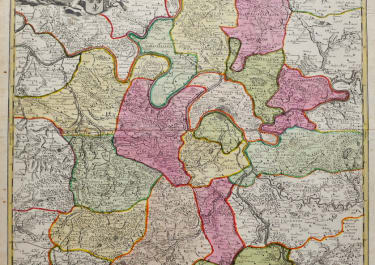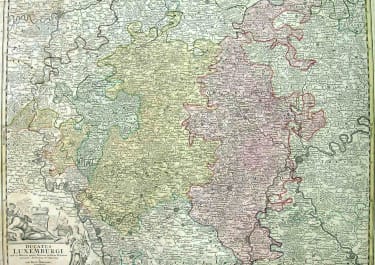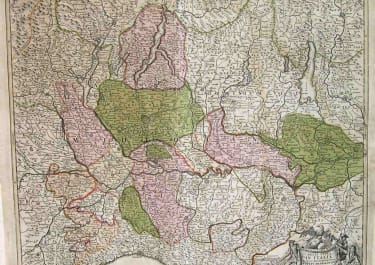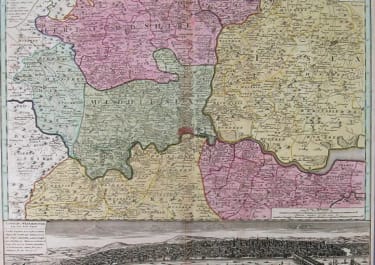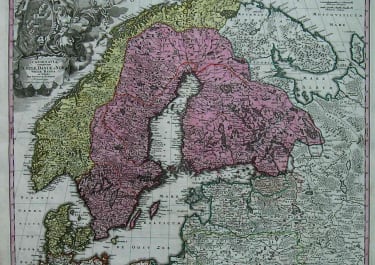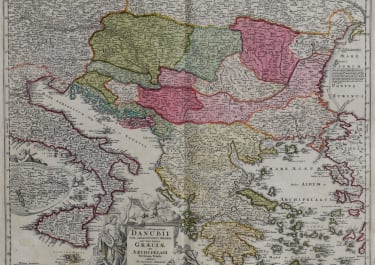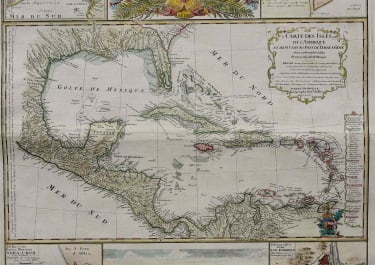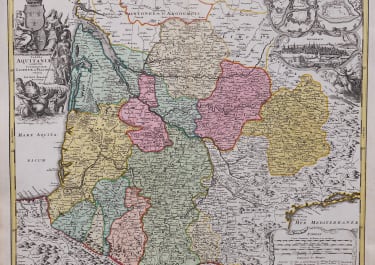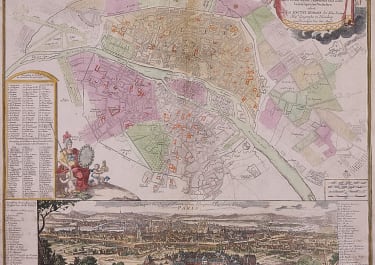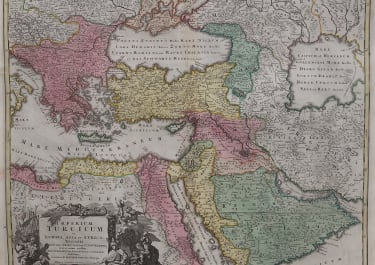GUINEA PROPRIA NEC NON NEGRITIAE
£345
This remarkable map is one of the most detailed maps of West Africa during the mid eighteenth century. Information is confined only to those regions that were well known and is particularly well delineated along the Niger River and the coast where there are extensive notations. The map is embellished with a large vignette of a native village with the distance scales engraved onto elephant tusks representing this important trade commodity of the region. A key at the bottom of the map identifies the various peoples and types of habitats.
The map was originally designed by the French cartographer Jean Baptiste d'Anville and edited by the German cartographer Johann Matthias Haas.
Original colour Cartouche uncoloured as always issued
Very good condition
REF Harvey M. Feinberg, Marion Johnson, “The West African Ivory Trade during the Eighteenth Century” The International Journal of African Historical Studies 15, no. 3 (1982): 435-53; Thomas E O’Toole, “Guinea” (Encyclopædia Britannica, 2018),
code : M4718
Cartographer : Homann Family
Date : 1743 Nuremberg
Size : 48.5* 56 cms
availability : Available
Price : £345
Johann Baptist Homann (1664-1724) started his career in Amsterdam as an apprentice with the Danckerts family before returning to Nuremberg to establish himself in business in 1702.
The firm quickly became the principal geographical publishers in Germany and in 1715 Homann was appointed Geographer to the Holy Roman Emperor and he was also a member of the Prussian Royal Academy of Sciences.
His publications included the "Neuer Atlas Ueber Die Gantze Welt ..." in 1707-. The "Grosser Atlas ..." of 1716- and the "Atlas Novus Terrarum Orbis Imperioa" in c.1720, as well as many others. Johann died in 1724 and was succeeded by his son Johann Christoph who died in 1730. After his death the firm took the name Homann's Heirs and continued thereafter until 1813. Publications with the Homann's Heirs' imprint included the "Grosser Atlas" in 1731, Doppelmays'r "Atlas Coelestis ..." in 1742 and the "Atlas Geographicus Maior ..." in 1753-, amongst others. Throughout this entire period the firm were the leading map publishers in Germany, employing a number of very important cartographers





